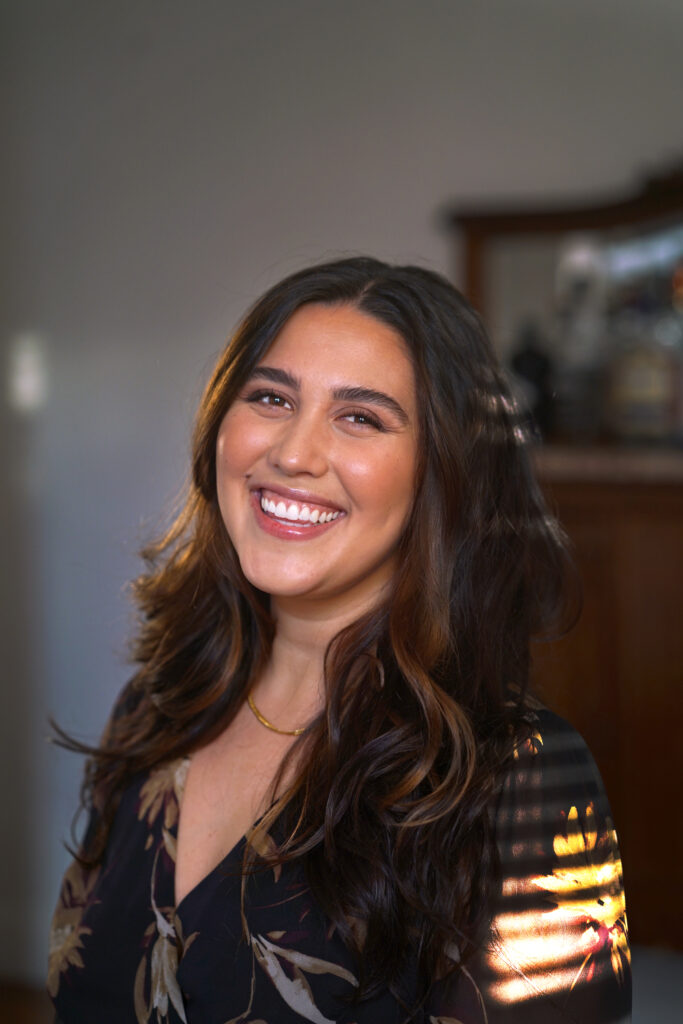If you can work as a sports reporter, you can report on anything.
“You have to be good with numbers, and you have to be really good on deadline,” says Tanya Sichynsky, now a senior staff editor at New York Times Cooking. “Working in sports and working through the sports media certificate program at Grady primed me to do the work that I’m doing now.”
One of the first graduates of the journalism school’s sports media program, Sichynsky’s first gig after graduation was doing social media for USA Today Sports. The job was a grind, with Sichynsky ABJ ’14 working nights and weekends from 5 p.m. to around 1 in the morning.
It was also intimidating.
“I started in January, and within two weeks I was live tweeting the Super Bowl, which was terrifying,” she says. “I felt like three kids in a trench coat.”
A year later, she landed at The Washington Post as an audience editor, first at the business desk. After a year or so, she jumped between teams within the audience department, eventually ending up in the Style section.
Woman with a Plan
It was the Style section’s “Voraciously” vertical, which aimed to help novice cooks become more comfortable in the kitchen, where Sichynsky found her niche.
Soon, in her downtime, she started her own personal cooking newsletter. “Quarter Cup Crisis” took her through 25 weeks of cooking before she turned 25, making everything from grilled snapper and salsa verde to pizza and pickles.
I feel most myself when I’m in my kitchen cooking something, whether it’s from a recipe or I’m messing around trying to create something on my own. It’s such an integral part of my identity that I feel like if you took it away, there might not be much left.” — Tanya Sichynsky ABJ ’14, senior staff editor at New York Times Cooking
That newsletter ultimately equipped Sichynsky to launch a similar one for the Post called “Meal Plan of Action.” The goal? To take the boring out of meal planning.
“The world of meal planning is kind of mindless. You can lose your relationship to food,” she says. “‘Meal Plan of Action’ is the antithesis of that. Instead, you think strategically about what you could eat that week, based off one task that you set aside time for on a Sunday that sets you up for the rest of the week.”
Roast a couple of pounds of sweet potatoes, for example, and you’ll get sweet potato soup, a sweet potato tostada, and pan-seared sweet potatoes with sausage.
Inspired by her passion for food, Sichynsky moved to NYT Cooking in December 2020. (Because of the COVID-19 pandemic, though, she works remotely while living in Washington, D.C.) In addition to editing recipes and newsletters, she started Recipe Matchmaker, a social media series where readers submit the ingredients they have on hand and she matches them with the perfect recipe. It was particularly helpful for many during the pandemic, when rushing to the grocery store for forgotten cilantro was no longer an option.
“I feel most myself when I’m in my kitchen cooking something, whether it’s from a recipe or I’m messing around trying to create something on my own. It’s such an integral part of my identity that I feel like if you took it away, there might not be much left,” Sichynsky says. And she hopes that readers establish their own relationships with food as they learn how to improve their cooking.
“We want people to adapt our recipes and to use them as educational tools to learn who they are as home cooks. I’m certainly a better cook because I’ve used NYT Cooking recipes.”
